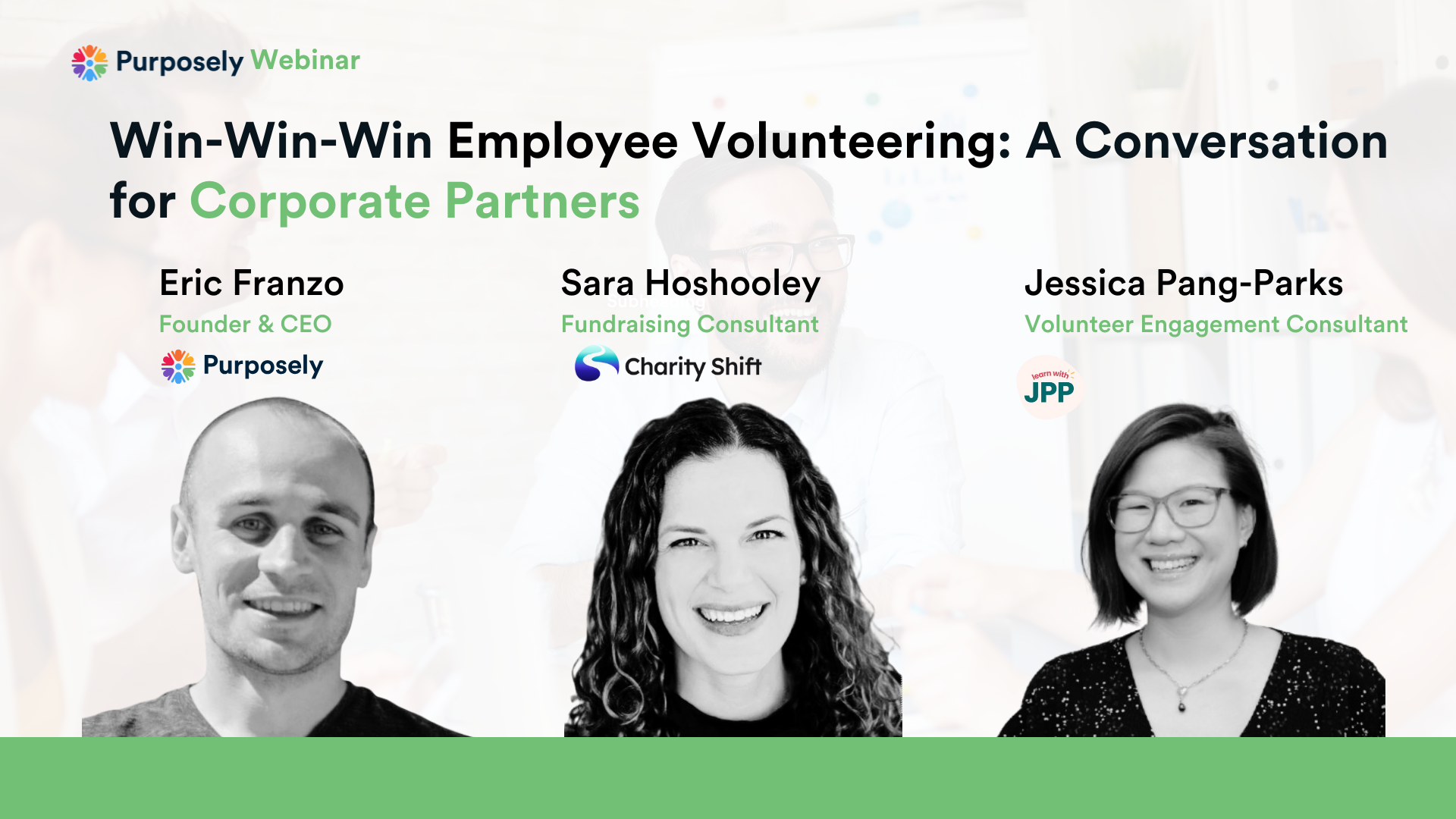Corporate volunteering is evolving, and fast. In a recent webinar hosted by the Charity Shift Network, Eric Franzo (CEO of Purposely), Sara Hoshooley, and Jessica Pang Parks returned for a deeper dive into how nonprofits and companies can build partnerships that are meaningful, sustainable, and genuinely impactful.
Watch the Webinar Recording Here
Here are the most important insights for corporate leaders that emerged from the discussion.
1. Nonprofits Fill Gaps the Government Can’t
Nonprofits often step in where government services end. From healthcare foundations to education charities, these organizations do the heavy lifting in advocacy, awareness, and equitable access. Corporate employees need to understand that volunteering with a nonprofit isn’t just a feel-good gesture, it’s a vital contribution to social systems that affect us all.
2. Corporate Support Isn’t Just About People Power
When companies think of giving back, they often focus on time and labour. But nonprofits also need financial investment to facilitate meaningful volunteer experiences. Whether it’s a flat fee per person or a donation to cover supplies and staffing, engaging corporate volunteers isn’t free, and shouldn’t be treated as such. Jessica noted that nonprofit staff are often overworked and underpaid, juggling complex logistics to make these experiences possible.
3. Skilled Volunteering Is Underrated and Highly Valuable
Beyond the typical group volunteering day, companies can offer specialized skills. Graphic designers, marketers, developers, and HR professionals can provide services that would otherwise require costly consultants. For example, a two-person marketing team could create a year’s worth of content for a nonprofit in just a week. It’s a win-win: the nonprofit gets high-impact work, and the company gets to showcase its brand and values.
4. Timing and Planning Matter
One of the most common pitfalls in corporate volunteering is poor timing. Nonprofits are often overwhelmed with requests during the holidays, but their needs exist year-round. Giving four to six weeks of lead time allows nonprofits to plan properly, train staff, and deliver meaningful experiences. Spontaneous holiday volunteering? Great intention, bad execution.
5. Volunteering Drives Engagement and Culture
Corporate volunteering has a measurable effect on employee connection, retention, and morale. It flattens hierarchies, executives and interns working side-by-side and creates opportunities for organic team building. Companies that involve leadership in volunteering efforts see higher participation and stronger internal momentum.
6. Metrics Need a Makeover
Counting hours and headcount is fine but storytelling and impact metrics are far more powerful. Companies should ask: How did this experience change our employees? Did it inspire further community engagement? What real difference did it make in people’s lives? Tracking both quantitative and qualitative outcomes builds a more authentic CSR story.
Final Thoughts:
“We’re not solving hunger by making sandwiches for two hours,” Jessica said. But we are building awareness, sparking deeper partnerships, and inspiring people to keep showing up. That’s what real impact looks like and why the future of corporate volunteering is about strategy, not just service.
